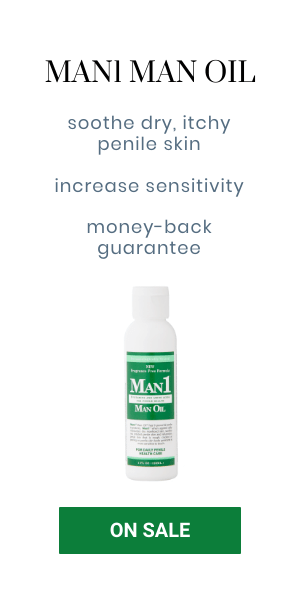A bit of redness on the manhood after a bout of vigorous sex is completely natural. But some men may notice more severe effects, such as itching and hives. In the interest of maintaining penis health, it’s imperative for men to know what may be causing such symptoms, such as a sexually transmitted infection. For men with a latex allergy, the answer will likely be as simple as the condom they used.
The following information will help men better understand latex allergy and their options for avoiding a reaction.
What is latex?
Latex is derived from the sap of a rubber tree. The material contains proteins that are harmless, but in some people – about 5-10% of the population, by some estimates – the immune system interprets one or more proteins in latex as a threat and triggers a response that can lead to skin itchiness and hives. Few people have severe reactions, but for these, it can be life-threatening.
How to tell if it’s a latex reaction?
If a man notices itchiness and perhaps redness and blotches on his member during, immediately after or soon after sex with a latex condom, then he should consider the barrier a likely cause. However, he should not jump to this conclusion without considering the following possibilities:
– Is he at risk for a sexually transmitted infection? Has he been tested recently?
– Does he have other symptoms, such as burning while urinating or unusual discharge, that might indicate a yeast infection?
– Does he tend to have dry skin on the penis in general?
– Is this the only time this reaction has occurred?
– Could something else about the condom have caused irritation? For example, does it contain spermicide or a flavored/scented agent?
If a man has generally healthy penis skin and has never had this reaction until using a latex condom, the condom is the likely culprit. If the condom does not contain chemical additives for flavoring or killing seed, then the material is the probable cause of irritation.
Alternative materials?
Men with latex allergies have several options for protection. Note that latex condoms are by far the most popular, and one can’t expect potential partners to be equipped with the special condoms an allergic man needs. He should make sure to bring his own.
Polyisoprene is similar in cost and feel to latex, so people looking for an alternative condom that is much like latex should try these out.
Polyurethane is another option; this material is thinner than latex, and it can transfer heat better. Some people find that this type of condom provides a more pleasurable experience. Partners should be aware that the material is a bit more brittle than latex, and slightly more prone to breaking. Using lubricant can help prevent condom breakages in general, and this is particularly true for polyurethane condoms.
Another option for non-latex condoms are those made of lambskin – the intestines of lambs. Though these condoms are considered to afford the most pleasurable sensations, they do not protect against sexually transmitted infections. So they should only be used by monogamous partners with very low infection risks and recent negative test results.
Avoiding materials to which a man’s penile skin is sensitive, along with using protection, are two important components of maintaining penis health. A man can further improve his skin condition by making use of a penis health crème (health professionals recommend Man1 Man Oil). This can help soothe itchy, dry manhood skin, whether from contact with an irritant or the frictions to which it is regularly exposed. Skin care is just as important for the penis as for the rest of the body. Treat the manhood skin to a quality moisturizer like Man1 Man Oil for a better look and feel.
